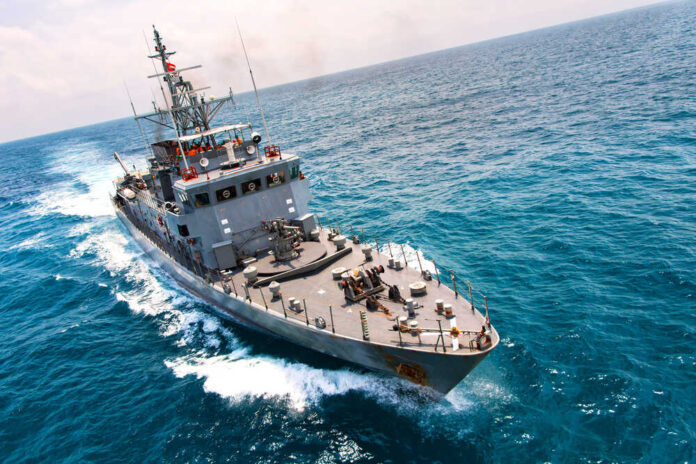Thursday saw the departure of the USS New Jersey from its Camden, New Jersey pier and her subsequent journey to the Philadelphia Navy Yard for substantial overhaul as the storied battleship sailed down the Delaware River.
After a brief stop at the Paulsboro Marine Terminal to undergo dry docking preparations, the tugboats will take the vessel to the naval yard in six days for final balancing.
Its website boasts that the ship has earned distinction in World War II, the Korean War, the Vietnam War, the Cold War, and engagements in the Middle East, making it the most distinguished battleship in Navy history. The ship surpassed all other battleships in terms of combat mileage, engagement number, and shells fired.
The battleship, constructed in Philadelphia in the 1940s, was retired in February 1991 after almost 50 years of service. Since 2001, it has served as a museum on water. Launched on December 7, 1942, the very same day that the Japanese air assault on Pearl Harbor marked one year ago, the ship was constructed at the old Philadelphia Naval Shipyard.
As the Pacific flagship under Adm. William “Bull” Halsey during World War II, the second fast battleship of the Iowa class, New Jersey, was in service. After the 1983 bombing of a Beirut barracks that killed 241 Americans, the battleship continued to serve in the Cold War, the Vietnam War, the Korean War, and a peacekeeping operation off the coast of Lebanon. The USS New Jersey is the most decorated warship in American naval history, with nineteen battle stars. In February 1991, the ship was decommissioned for the fourth and last time. In October 2001, it began a second career across the river from Philadelphia as a museum ship.
Once the 887-foot-long battleship had departed from the pier, the supporting tugboats swiftly steered it down the New Jersey River. The ship relied on the tugboats for propulsion and direction as the engines and controls were no longer functional. While “Big J” slid beneath the Walt Whitman Bridge, authorities temporarily stopped traffic to ensure everyone’s safety.
Museum authorities have estimated that the dry-docking repair phase will last around 60 days. During this time, the hull will be inspected and painted, and any necessary repairs will be made.
Special tours will be available while the battleship is in dry dock so that tourists may see the 62,000-ton vessel in a new light.


















